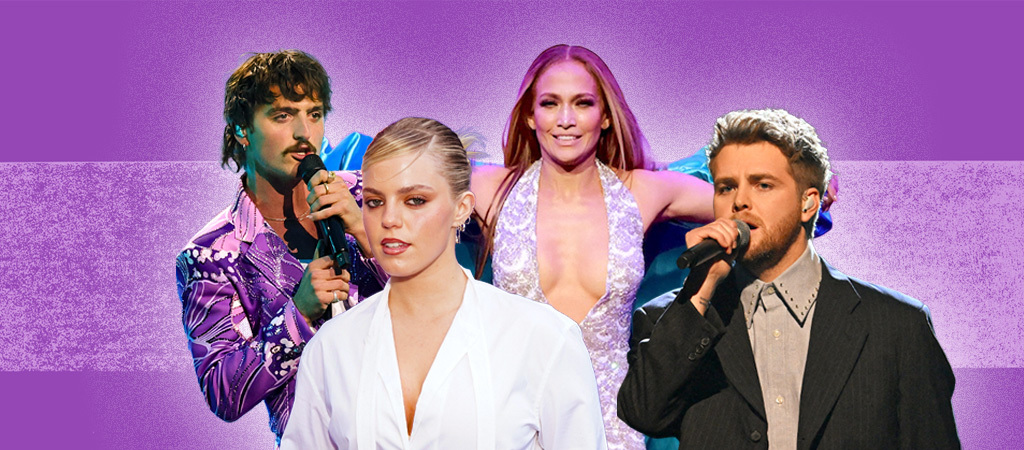
While Janet Jackson and Rod Stewart received career awards at the 2025 American Music Awards, the performances and award wins themselves gave audiences a look at where music is heading for the foreseeable future. That’s both a figurative and literal characterization: multiple artists, including Alex Warren, Benson Boone, and Reneé Rapp, used their performances to promote their current projects (both Boone and Rapp have albums coming this summer, while Warren is riding the wave of his September release, You’ll Be Alright, Kid).
But on the other hand, despite zeitgeisty wins for SZA and Eminem, many of the breakouts involved artists who appear to be flying under the radar while still having outsized impacts on young audiences. As one of the few fan-voted award shows, unlike, say, the Grammys, which require professional connections, annual dues, and cultural cachet for participation, the AMAs are a slightly better way to place a finger on the pulse of where listeners are — Twitter Stan wars meddling with certain results notwithstanding.
Consider Gracie Abrams’ surprising New Artist Of The Year award win over chart dominators like Chappell Roan, Shaboozey, and Tommy Richman, or Billie Eilish’s Artist Of The Year win over cultural attention magnets like Kendrick Lamar, Morgan Wallen, and Sabrina Carpenter. Doechii’s win for new category Social Song Of The Year with her TikTok-favorite hit “Anxiety” also continued the Swamp Princess’ fascinating rise to the upper echelons of rap and the streaming and sales charts.
However, the show having so many categories begs the question of which awards are televised and why. For instance, Favorite Country Duo Dan + Shay were actually in attendance to collect their award, but Favorite Male Hip-Hop Artist Eminem(??????) was not, while neither Favorite Male nor Female Country Artist (Post Malone, Beyoncé) was broadcast, and Favorite Female Hip-Hop Artist (it was Megan Thee Stallion) also went unaired. Meanwhile, the Album and Song of the Year categories are both new, so it’s understandable that they weren’t part of the broadcast… but then, why were they added to the slate? Billie Eilish won both, by the way.
However, setting aside those questionable decisions, the other half of the performances, those honoring musical legends like Janet Jackson, Gloria Estefan, and Rod Stewart (and yes, even Jennifer Lopez, who has been a megastar in the past 20 years, despite her down year) were immaculate showcases of the sorts of talents that many of the younger honorees should hope to be. While some on social media found J. Lo’s six-minute dance medley confusing, it was also exactly the vehicle to display the sort of technical craftsmanship that even allows someone to share the stage with artists 25 years junior over 30 years into a career.
Some other fascinating trends of the evening: The era of the single genre star may just be at its end. In nearly every genre category, if a crossover artist was nominated, they won. Beyoncé and Post Malone took home country awards (Favorite Female Country Artist and Country Album Of The Year for her, Favorite Male Country Artist for him), while Lady Gaga was declared Favorite Dance/Electronic Artist for her work on Mayhem. Also, I’m not sure The Weeknd necessarily qualifies as R&B, but there he is, atop the Favorite Male R&B Artist category, along with an R&B Album Of The Year win for Hurry Up, Tomorrow.
Meanwhile, it sounds like thirst for a Bruno Mars comeback might be as high as it’s ever been, with the “Vegas lounge singer” taking Favorite Male Pop Artist and Favorite Music Video (alongside Lady Gaga for “Die With A Smile”), despite having been holed up in the desert . And Billie Eilish seems to have the hardest core of fans willing to spend time voting for her out of all the pop girlies, even taking home Favorite Touring Artist over the mighty Taylor Swift and her merry Twitter mob.
It certainly looks like the future will continue to be dominated by genre dilettantes, by earnest singer-songwriters and vulnerable, yet tough rap queens, and somehow, inexplicably, by Eminem’s faceless gagge of Mountain Dew swilling fanboys, who refuse to acknowledge any other MC no matter how corny his concepts get (truly, we are in Trump’s America now). Benson Boone will keep backflipping into America’s hearts, Reneé Rapp and Chappelle Roan will continue their all-out assault of grrrl-powered, bi-panic-baiting outcast anthems, and Beyoncé will continue doing anything she damn well pleases. The American Music Awards will continue to live up to their name: the music that largely represents America, sincere, diverse, hopeful, maybe a little bit cheesy, and always ready to put on a show.
source https://uproxx.com/music/the-2025-american-music-awards-recap/
Comments
Post a Comment